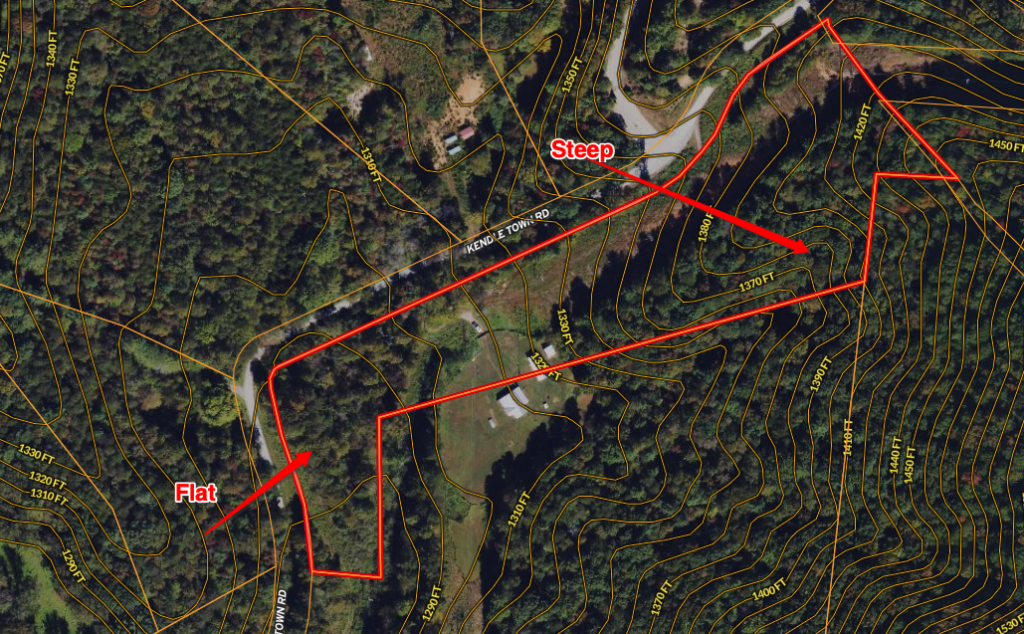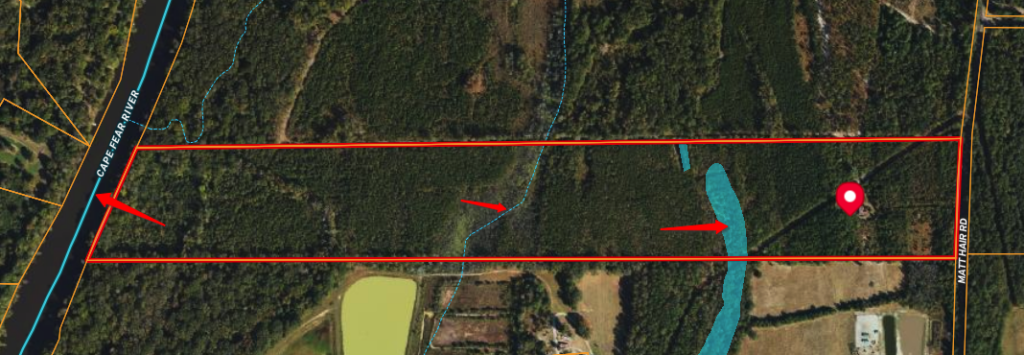How do we know that we have a good land deal to invest in?
This is a very common question that we get. We have a very detailed, 11 step due diligence approach to every single land deal that we look at. Below is how we determine which land deals to move forward with, and which ones to walk away from.
Our 11 steps are established in order to make sure that the land fits ours MUSTS, which are:
- Usable
- Desirable
- Marketable
Step 1 – Topography
In this step, we look at the contours of the land to understand the feasibility of construction. Typically, the more sloped the land, the harder it is to build, and the less usable it is.

Step 2 – Flood Zones
There are multiple type of FEMA flood zones (100 year, 500 year, etc). While not all flood zones are bad, it can impact construction in a negative way (more expensive for insurance – less buyers pool). Areas where flood zones are common (coasts, near rivers, etc) will be less impacted by flood zone price discounts where as places where it is less common (inland, mountains, etc.) will be more impacted by it.

Step 3 – Wetlands
While flood zones are areas of land that are nearly always dry (with the exception of when it floods), wetlands are areas of land that are always wet. Think about a swamp, river, marshes, lakes, etc. These areas of land cannot be built on, and are environmentally protected. Wetlands can dramatically impact the value of a piece of land, since that area of land is not usable.

Step 4 – Water Features
Water features are aspects like a lake, ocean, river, or pond. Even a nice creek or stream on the property would be considered a water feature. Water features increase the desirability of a property.

Step 5 – Transmission Lines & Railroads
We evaluate the land to look at if there are any major electrical transmission lines or railroads running across it, or nearby. These aspects can reduce the desirability of a property.

Step 6 – Cleared/Graded
We look at how cleared/graded is the land? Some land we buy has already been cleared & graded by a developer, other land we buy is very raw and is a very overgrown forest. The less clearing required in order to put in a homesite, the more desirable the property is.

Step 7 – Legal Access
One of the most important features of land is – how do we access it? As a baseline rule, we DO NOT purchase land locked properties. Landlocked means that there is no legal way to access the property. If there is an easement or right of way, it must be legally recorded for us to consider it. The level of desirability & usability for land goes in this order:
- Direct road access – publicly maintained
- Direct road access – privately maintained
- Deeded easement or right of way (the more lots you need to drive through to get to yours, the less desirable)
- Landlocked (we do not pursue)

Step 8 – Utilities
Another very important piece of due diligence process is understanding what type of utilities are available to this property? Utilities are broken down in 3 ways: 1) Water, 2) Waste disposal and 3) Power/electricity
- Water – does it have access to city/county water supply, or do we need a Well? Does it already have a well?
- Waste Disposal – does it have access to city/county sewer system, or do we need to install a septic system? Does it have a septic system? Has it ever perced for a septic system? If not – we get a perc test done. We do not buy land that does not perc.
- Power/electricity – who is the service provider in the area and how much does it cost to get power to the property?
Step 9 – Formal Appraisal
Once we have all of the previous 8 steps identified and understood, we hire a local licensed appraiser in the area to give us a formal appraisal. Their opinion of value is critical to ensuring that the price we are purchasing the land for is a good deal.
Step 10 – Drone Photography
For each piece of land that we buy, we hire a drone photographer to go out to the property to take pictures for us. This helps us get eyes on the property to make sure we are not missing anything. We review these pictures, as well as talk to the drone pilot for feedback.
Step 11 – Title review
We close all of our deals using a closing attorney or a title company. Once the title work is complete, we sit down with the attorney and review the title to make sure that we make sure there are no red flags with the land. Things we look for are:
- Deed restrictions
- Easements or Rights-of-Way that may inhibit the use of the land
- Encumbrances
- Other exclusions on the title policy
Once we complete and review all 11 steps, as well as line up the capital for funding the project, we proceed with the purchase.

